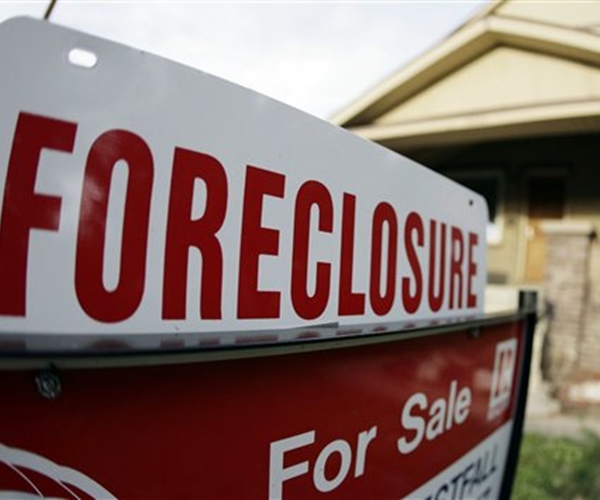Home Foreclosures Fall to Record Low but Student Debt Lingers

(AP Images/David Zalubowski)
By Frank McGuire | Wednesday, 10 Aug 2016
Home foreclosures have tumbled to record lows as fewer borrowers fell behind on their home loan payments, but Americans are still struggling to pay off their school loans.
The Federal Reserve Bank of New York reports that 82,000 home-loan consumers saw lenders begin proceedings to reclaim their mortgaged property in the second quarter, the lowest in the 18-year history of the data.
The share of home-loan balances that were 90 or more days overdue declined to the lowest level since 2007 for mortgages and to a record low for credit card loans. Mortgage debt was $8.36 trillion, up $246 billion from last year, while student loan debt was $1.26 trillion, up $69 billion.
Sam Khater, an economist at Corelogic, a property information provider, told the Financial Times that America still faces a long pipeline of crisis-era foreclosures, but when it comes to newer mortgages the performance was “pristine.”
“The U.S. residential market is the healthiest it has been in 20 years,” he said. “It is very stable. You are seeing steady increases in house prices, steady increases in sales, and underwriting is steady … It is not suffering from the booms and busts we have had in the last two decades,” he told the FT.
Overall, total U.S. household debt hit $12.29 trillion in the second
quarter, up $434 billion from a year earlier as auto loans and
credit card debt increased, a Federal Reserve Bank of New York
survey showed on Tuesday.
Some 4.8 percent of the outstanding debt was in some stage of delinquency, down from 5.6 percent from a year ago, according to the quarterly household debt and credit report.
Americans were struggling to pay off $1.26 trillion of student debt
in the quarter, compared with $439 billion a decade earlier. The
total due was higher than amounts on auto loans and credit cards.
Auto debt was $1.10 trillion, up $97 billion from a year earlier, while the aggregate credit card limit increased for the 14th straight quarter, reflecting Americans' easier access to credit as the 2007-2009 financial crisis fades.
The
report also highlighted a downward trend in
credit card delinquency rate — something that has been going down
since the height of the financial crisis and is now nearing the low
level seen in 1999-2000.
“The downward trend is consistent with the movement in credit
extensions toward borrowers with higher credit scores as well as an
improvement in overall economic conditions,” the New York Fed said.
The report “highlights a positive ongoing trend in household debt,” Donghoon Lee, a New York Fed economist, explained to the Wall Street Journal. “Delinquency rates continue to improve, even as credit has become more widely available.”
Meanwhile, the state with the highest number of completed foreclosures in the 12 months ending in June 2016 was Florida at 60,000, followed by Michigan at 47,000, Texas at 27,000, Ohio at 23,000 and California at 22,000. These states account for nearly 40% of all completed foreclosures nationally.
On the other hand, the area that had the lowest number of completed foreclosures was the District of Columbia at 179, followed by North Dakota at 321, West Virginia at 487, Alaska at 639 and Montana at 675.
"Mortgage loan performance depends on the economic health of local markets, with varied differences even within a state," CoreLogic Chief Economist Frank Nothaft told Hosuing Wire.
(Newsmax wire services contributed to this report).
Read more: FT: US Foreclosures Hit Record Low As Borrowers' Performance Picks Up
Important: Can you afford to Retire?